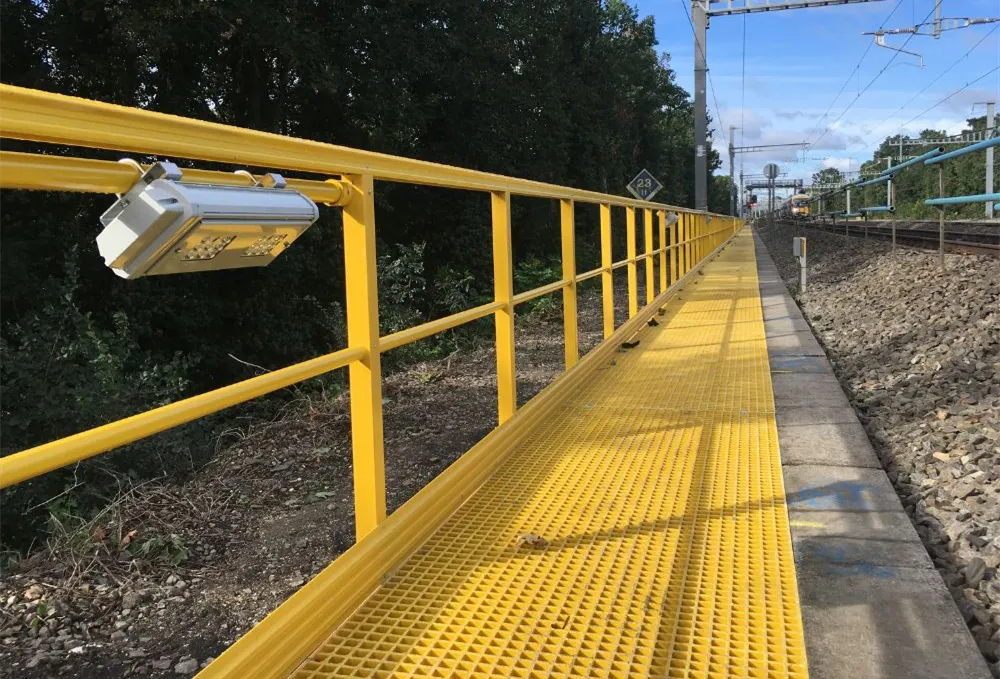loading...
- No. 9, Xingyuan South Street, Dongwaihuan Road, Zaoqiang County, Hengshui, Hebei, China
- admin@zjcomposites.com
- +86 15097380338
- Welcome to visit our website!
frp square tube price
Pricing Analysis of FRP Square Tubes
Fiber Reinforced Polymer (FRP) square tubes have emerged as a popular choice across various industries due to their high strength, lightweight properties, and resistance to corrosion and environmental degradation. As industries evolve towards more durable and sustainable materials, understanding the pricing dynamics of FRP square tubes becomes essential for manufacturers, builders, and engineers alike. This article explores the factors influencing the price of FRP square tubes and provides a comprehensive overview of the current market situation.
Overview of FRP Square Tubes
FRP square tubes are made from a composite material that consists of polymer resin reinforced with fiberglass. This construction bestows the tubes with an exceptional strength-to-weight ratio, making them suitable for numerous applications, including construction, marine, aerospace, and automotive industries. The corrosion resistance of FRP also makes it an ideal choice for environments exposed to water, chemicals, and high humidity, often outperforming traditional materials such as steel and aluminum.
Key Factors Influencing Pricing
1. Raw Material Costs The primary components of FRP—polymeric resins and fiberglass—significantly influence its overall price. Fluctuations in the cost of these raw materials, which can be affected by global supply chains, production rates, and market demand, directly impact the pricing of FRP square tubes. For example, if the price of resin increases due to higher crude oil prices, the overall cost of producing FRP products will also rise.
2. Manufacturing Processes The technique used to manufacture FRP square tubes, whether pultrusion, filament winding, or resin transfer molding, affects production efficiency and material waste. Some techniques may be more cost-effective but yield lower quality, while others might ensure greater durability and performance at a higher production cost. This variance in manufacturing processes significantly contributes to the end pricing of these tubes.
3. Market Demand and Supply As industries increasingly recognize the benefits of FRP materials, demand has soared. A higher demand in sectors such as wind energy, construction, and vehicle manufacturing drives prices upward, particularly if supply chains are strained or production capacities cannot keep pace. Conversely, if the market sees a decline in demand or an oversupply situation, prices may decrease, providing opportunities for cost savings for consumers.
frp square tube price

4. Custom Specifications FRP square tubes can be manufactured in various sizes, shapes, and designs to meet specific project requirements. Customization often demands specialized manufacturing processes or materials, affecting the final price. Buyers seeking unique specifications must be prepared for potentially higher costs compared to standard products.
5. Geographical Location The costs for FRP square tubes can also vary based on geographical market conditions. In regions with robust industrial activity or a higher prevalence of FRP applications, prices may be more competitive. Conversely, areas with limited availability or logistical challenges may see elevated prices due to transportation costs and lower competition.
Current Market Trends
As of 2023, the global market for FRP materials is expected to grow steadily, driven by increasing investments in infrastructure and green energy initiatives. The demand for lightweight, durable materials in the automotive sector is also on the rise, further stimulating the FRP market.
Pricing for FRP square tubes generally ranges from $3 to $20 per linear foot, depending on the aforementioned factors. However, specific projects may obtain bulk pricing or discounted rates based on negotiation or long-term supply agreements.
Conclusion
In conclusion, the pricing of FRP square tubes is shaped by a variety of factors that include raw material costs, manufacturing processes, market dynamics, custom specifications, and geographical considerations. As industries continue to shift towards sustainable and high-performance materials, understanding these dynamics is crucial for making informed purchasing decisions. Given the evolving nature of the material market, stakeholders should stay updated on industry trends and seek competitive suppliers to secure the best pricing and quality for their projects. Investing in FRP square tubes can lead to long-term durability, efficiency, and cost savings in both industrial and commercial applications.
-
The Rise of FRP Profiles: Strong, Lightweight, and Built to LastNewsJul.14,2025
-
SMC Panel Tanks: A Modern Water Storage Solution for All EnvironmentsNewsJul.14,2025
-
GRP Grating: A Modern Solution for Safe and Durable Access SystemsNewsJul.14,2025
-
Galvanized Steel Water Tanks: Durable, Reliable, and Ready for UseNewsJul.14,2025
-
FRP Mini Mesh Grating: The Safer, Smarter Flooring SolutionNewsJul.14,2025
-
Exploring FRP Vessels: Durable Solutions for Modern Fluid HandlingNewsJul.14,2025
-
GRP Structures: The Future of Lightweight, High-Performance EngineeringNewsJun.20,2025
